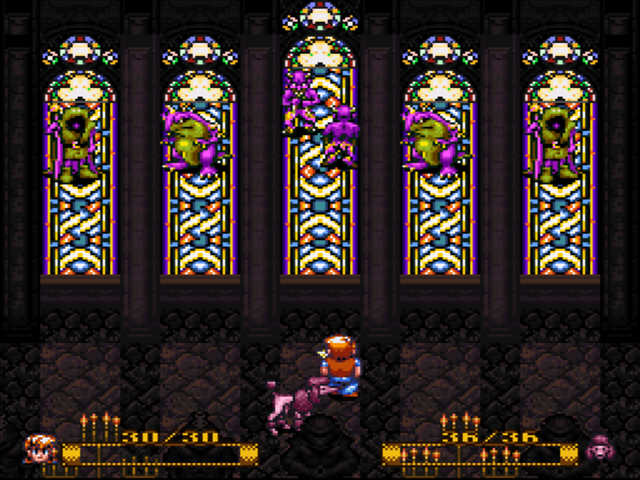

Interesting note, however, is that due to SquareSoft being a different tax entity from parent company Square, they couldn’t directly take the code from Secret of Mana’s team.
A lot of cues were taken from Secret of Mana, including the combat system and the ring-based inventory system. This eventually became the worlds of Evermore, with landscapes ranging from Prehistory to Ancient Rome to a far-future space station.

With a working title of Vex and the Mezmers, Secret of Evermore originally centred on the idea of a group of magic users sharing dreams. Given a brief from the bosses at Square that they create a distinctly “American” Secret of Mana, the team latched onto a 1950’s B movie aesthetic with a tongue in cheek sense of humour as it would be accessible and appealing to an American audience. Assembling a team of coders and developers at the Redmond office, Square Soft began developing their very first game. This became known as Square Soft and it was in charge of localising and distributing Square properties into Western markets.īy 1994, the company was ready to try something different. Square, back before they merged with Enix, recognised this and opened a subsidiary company in 1989 in Redmond, Washington. Nintendo had proven that not only was there a market overseas for games, they had also pushed them into the mainstream of popular culture. Secret of Evermore: A Product of Redmondīy the late 80s, video games were no longer a Japanese obsession. What made the game so different from everything else in the genre is that Secret of Evermore was the fact that it is a Japanese roleplaying game that wasn’t made in Japan. Its not the graphics, which were already obsolete with the worldwide release of the Playstation earlier that year. What makes Secret of Evermore so unique? Its not the combat system, which is shamelessly lifted from Secret of Mana following its clear success a few years earlier.


 0 kommentar(er)
0 kommentar(er)
